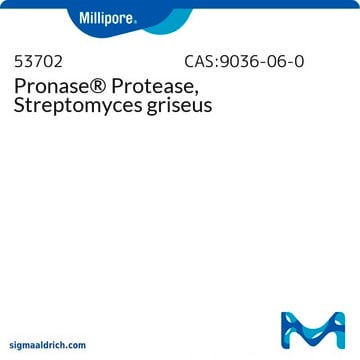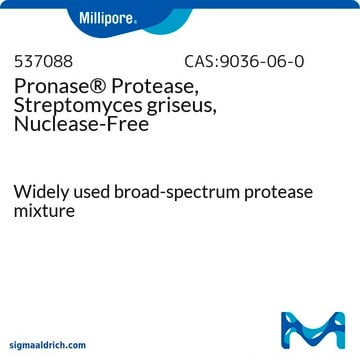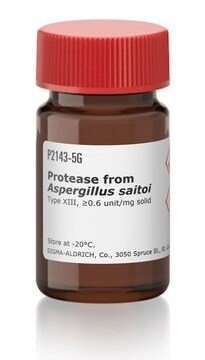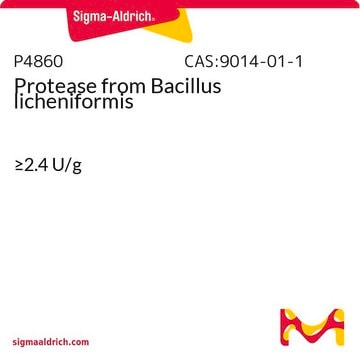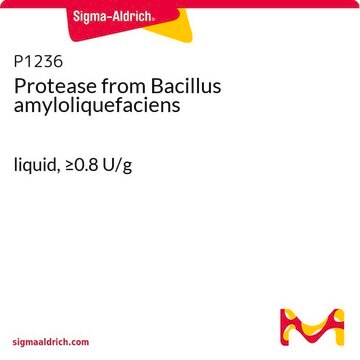P6911
Protease from Streptomyces griseus
BioReagent, DNase, RNase, and nickase, none detected (No RNase.)
Synonym(s):
Actinase E, Pronase E
About This Item
Recommended Products
grade
for molecular biology
Quality Level
product line
BioReagent
form
powder
mol wt
monomer ~20 kDa
concentration
≥4 unit/mg
solubility
water: 5-20 mg/mL
foreign activity
DNase, RNase, and nickase, none detected (No RNase.)
storage temp.
−20°C
Looking for similar products? Visit Product Comparison Guide
General description
Specificity
Application
- Nucleic acid isolation procedures in incubations
- Degrade protein during nucleic acid purification
- Proteolysis of insoluble protein
- Structural protein studies
Physical properties
Unit Definition
Preparation Note
Analysis Note
Other Notes
Signal Word
Danger
Hazard Statements
Precautionary Statements
Hazard Classifications
Eye Irrit. 2 - Resp. Sens. 1 - Skin Irrit. 2 - STOT SE 3
Target Organs
Respiratory system
Storage Class Code
11 - Combustible Solids
WGK
WGK 2
Flash Point(F)
Not applicable
Flash Point(C)
Not applicable
Personal Protective Equipment
Certificates of Analysis (COA)
Search for Certificates of Analysis (COA) by entering the products Lot/Batch Number. Lot and Batch Numbers can be found on a product’s label following the words ‘Lot’ or ‘Batch’.
Already Own This Product?
Find documentation for the products that you have recently purchased in the Document Library.
Customers Also Viewed
Our team of scientists has experience in all areas of research including Life Science, Material Science, Chemical Synthesis, Chromatography, Analytical and many others.
Contact Technical Service



